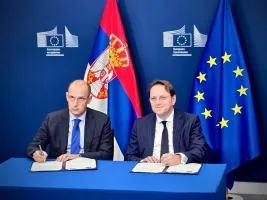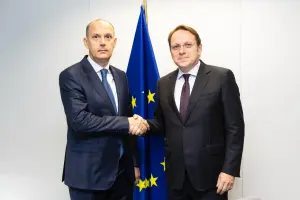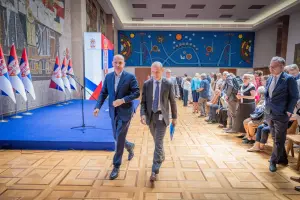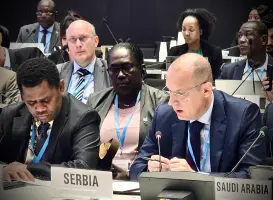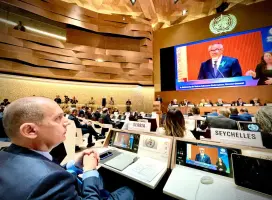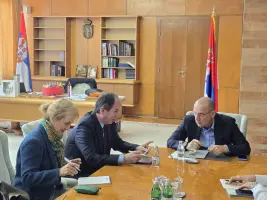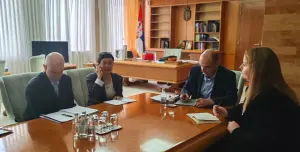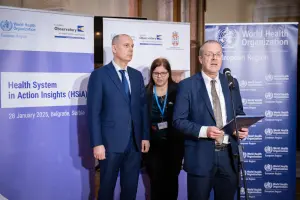The Ministry of Health of Serbia’s 2012-2024 budget rose from slightly over 8.5 billion dinars to over 31.5 billion dinars. In 2024, over 97 percent this amount was financed directly from the Republic of Serbia budget, show the Ministry’s data.
“Capital Investments in Healthcare at Over 400 Million Euro": How Has the Dying Patient Recovered?
The ability of the state’s fiscal system and the budget to finance one of the most important ministries in the government, without resorting to expensive loans for the ministry’s core activity, is an indicator of the public finances’ "good health".
Numerous new hospitals, clinics and clinical centres, as well as the equipment that the destroyed healthcare system desperately needed, are an indication that Serbia has progressed in this field. However, people are key, i.e. staff without which hospitals and clinics are just empty buildings, and the state-of-the-art equipment just an unused piece of technology.
Investing in staff, equipment and infrastructure have been and remain the Ministry of Health’s current priorities. The reconstruction and construction of many health facilities in Serbia, primary health centres, hospitals and clinical centres is underway.
In addition to the reconstruction and construction of facilities, many mammography units, X-ray devices, ultrasound devices, magnetic resonance devices have been purchased, and the announcements that Serbia’s every region will have magnetic resonance imaging bring optimism to the population and health professionals, even in the smallest areas.
"The Patient from Serbia", "A Dying Patient", "The Society’s Cancer", are all phrases that were used to describe Serbian health care system before the "infusion" it received, which, for example, restored Belgrade's glory as the clinical-hospital and healthcare hub of the Balkans, as it was in the time of the former country, before the wars, sanctions, bombings and financial devastation.
Đerlek: Since the time of Broz, there has been no investment in healthcare as we have today, the most obvious evidence in the last 10-12 years
Dr Mirsad Đerlek, State Secretary in the Ministry of Health, spoke on this topic for RTS. He analysed the previous 30-year period, noting that he had been part of the health system for so long and was, thus, speaking from his own experience.
"I have been in health care for 30 years and really as far as I have followed in the last 50 years the investments in healthcare since the time of Josip Broz have not been as high as they are now. These are not stories that cannot be verified, you know what was invested in the healthcare system in the last 10-12 years. If we start from the infrastructure projects, the one in Niš has already been completed, in Belgrade and Novi Sad the works are progressing according to plan. The problem with Kragujevac has already been resolved, the tender for the Kragujevac Clinical Centre is pending and the start of works is expected sometime in the spring of 2025. These are big capital investments worth more than 400 million euro," said Đerlek and continued:
"On the other hand, there is the construction of Tiršova 2 Children’s Clinic. It is a decades-long dream not only of health professionals working in the current Tiršova clinic, but also of parents, not only of Belgrade citizens, but also of parents from all over Serbia, because we know what a renowned institution it is. Investments worth 118 million euro will be made there, top-of-the-range diagnostics with 200 beds for the children, 100 beds for companions and parents, it is a big thing," he said.
In addition to what is planned in terms of construction and reconstruction in Belgrade, Đerlek highlighted the works in other parts of Serbia, which have not been neglected in terms of projects.
"In addition to that, we are currently working on several general hospitals and health centres, for example in Novi Pazar there is a magnificent facility for that region, then in Prokuplje, Leskovac, Vranje, Surdulica, Kikinda. Works are underway in the whole of Serbia when it comes to infrastructure," says Dr Đerlek.
He also points out the amount of equipment that has been purchased over a short period on the territory of the whole of Serbia.
"I really couldn't even list all the equipment and I would talk for an hour about how much more devices and equipment we have now than just a few years or decades ago.
Along with stating that in the previous period, billions have been invested in our health system, Đerlek also highlights the importance of the Expo 2027-related projects, stating that numerous projects in health care are also being carried out within the framework of this great undertaking.
"You have already mentioned some monetary investments, but those are billions invested in the previous period in our health system. I expect until 2027, as the President of the Republic keeps reiterating, the Expo is not just the construction of the Expo complex in Belgrade, that Expo is the construction of infrastructural facilities and procurement of equipment for healthcare, too," highlights Đerlek.
Trying to list the items of equipment that has been purchased in the last six months, Đerlek lists an impressive number of the most indispensable items of equipment.
"In the last six months, 22 magnetic resonance devices have been purchased, which means that every region will have a magnetic resonance device, which was once unimaginable. Fifty-five scanners, 135 digital X-ray devices, 27 mammography units, 50 ultrasound devices, over 320 ambulances have been replaced and they are extremely important for the health system’s operation," Đerlek notes.
Apart from the items of equipment, the citizens of Serbia are particularly interested in maternity hospitals, for which Đerlek points out that the plan is to have all of them either renovated or built in the next two years.
"We want to provide our sisters, our fellow citizens, with the best conditions by following everything that is happening in the region, in Europe, and all 57-59 maternity hospitals will be completely renovated or built in two years, depending on the state in which they are currently", he states.
In addition to new maternity hospitals, during the COVID pandemic, Serbia also received three COVID hospitals, which were built with the state-of-the-art equipment in them. The one in Novi Sad now has a different purpose, the hospital in Kruševac is expected to be repurposed, too, while there were problems with the hospital in Batajnica regarding the land, for which Đerlek says that payment was made by the Government of Serbia last Thursday to solve it.
"In Novi Sad and in Kruševac, those palliative care and dialysis facilities are really well used, what is important for the citizens to know is that, I think, last Thursday the government of the Republic of Serbia made a payment to resolve the property-legal relations that prevented the putting to use of the hospital in Batajnica," says Đerlek and continues:
"There are two situations for which it will be used, that will be decided by the Minister of Health, Zlatibor Lončar, whether it will be the same as in Kruševac and Novi Sad, palliative-dialysis, or an infectious diseases clinic, it is really not within my jurisdiction," he points out.
For rare diseases, 7.2 billion dinars, in 2008, zero dinars
When talking about investing in healthcare and, of course, employment, many young doctors and nurses have also got employment in the previous period, and the Ministry of Health realised that the staff is actually the pillar of the healthcare system, noted Dr Đerlek.
"I am really happy that all those who helped the state at the most difficult time during the COVID pandemic got a job, that is several thousand healthcare professionals and, as Minister Zlatibor Lončar has stated several times: 'I came back to employ healthcare professionals and to give them specialisations', because we at the Ministry of Health realised that the staff is the pillar, the pillar of the health system," said Đerlek.
That Serbian healthcare has changed for the better is also demonstrated by specific data on state support for couples in vitro fertilisation, as well as for the treatment of rare diseases. August is the month dedicated to patients with spinal muscular atrophy, and, in 2012, Serbia allocated 130 million for rare diseases, today it is billions.
"When it comes to rare diseases, I can freely say, since I am a neurologist, the state completely forgot about the patients and the parents of those children, because in 2008 zero dinars were allocated for rare diseases. What you said was in 2012. 130 million. This year's budget is 7.2 billion," said Đerlek.
In addition, the state managed to provide screening for four extremely important rare diseases, Đerlek highlights.
"We managed to provide screening for four extremely important rare diseases, namely spinal muscular atrophy, phenylketonuria, cystic fibrosis, hypothyroidism, and what is important, the state pays for innovative drugs, the most expensive ones which cost 2 million dinars, for children suffering from butterfly skin disease treatment costs 630 thousand euro in just one year. The state will do everything to ensure that children with rare diseases and their parents have much better conditions," he said.
In addition, the Directorate for Children with Rare Diseases is also under the Ministry’s remit, and in addition to this problem, special attention is paid to in vitro fertilisation, for which an unlimited number of procedures have been introduced, which Đerlek connects with the increase in the birth rate, which is the state’s strategic goal.
"Our goal is to increase the birth rate, and we really have excellent results. Last year, the state paid for 7,500 couples who were able to perform bio-assisted fertilisation. This year, in three months, 4,918 procedures have been performed, which ranks us at the very top globally. We want to reduce negative birth rate, because all that we do, including roads and hospitals and railways and our economy, we have to leave it to someone, and that is to our children and our grandchildren," Dr Đerlek told RTS.
Author: Euronews Serbia



